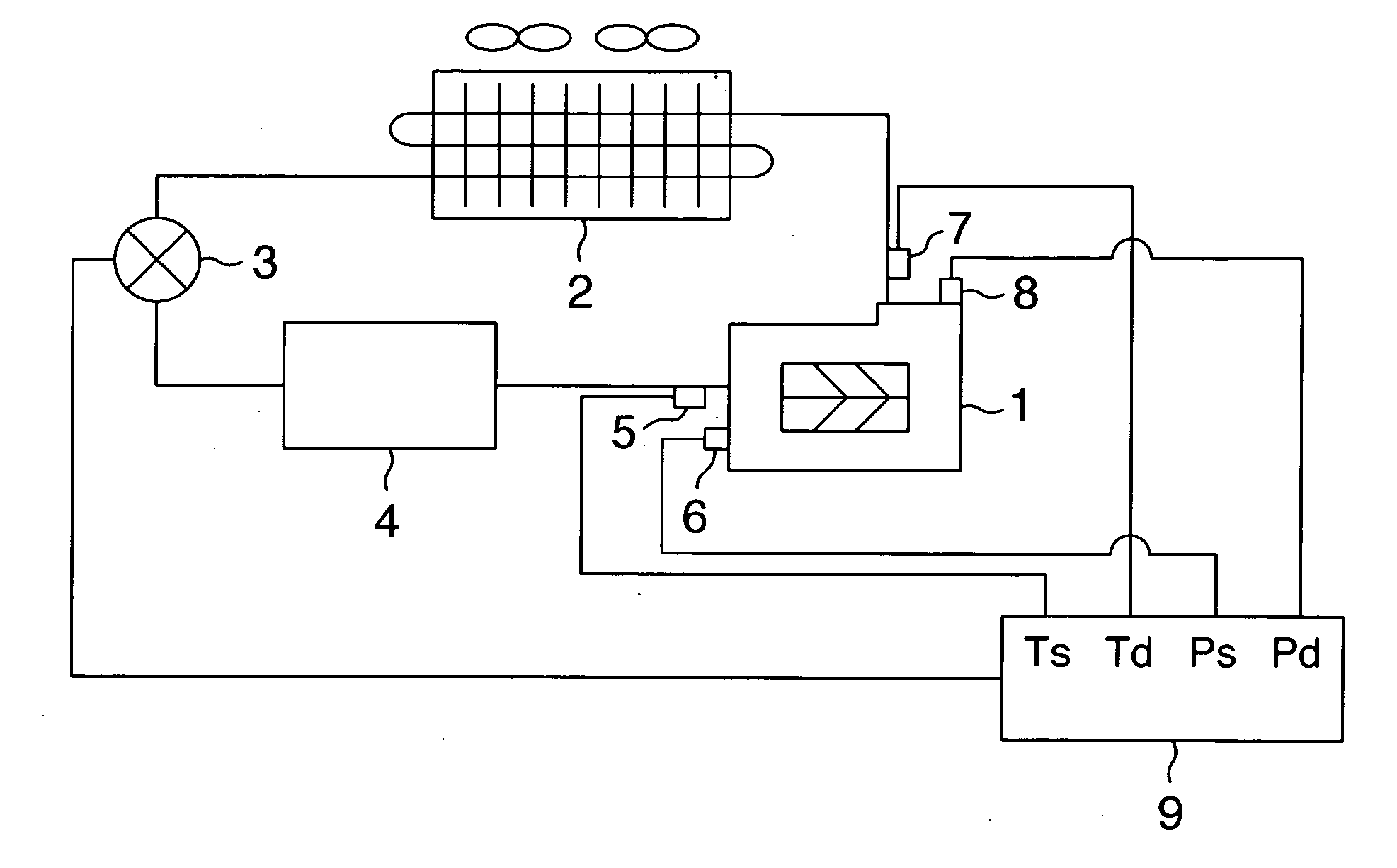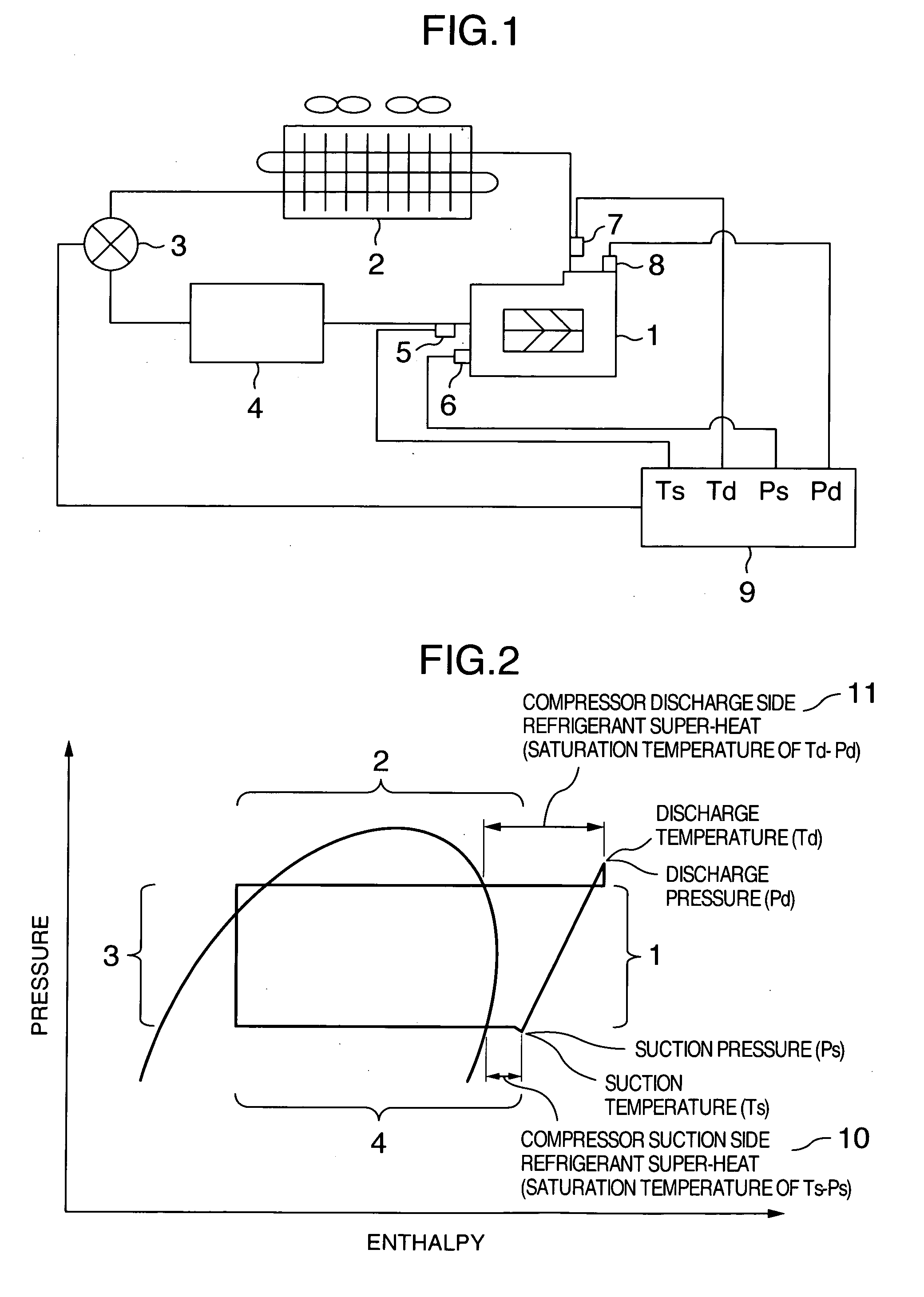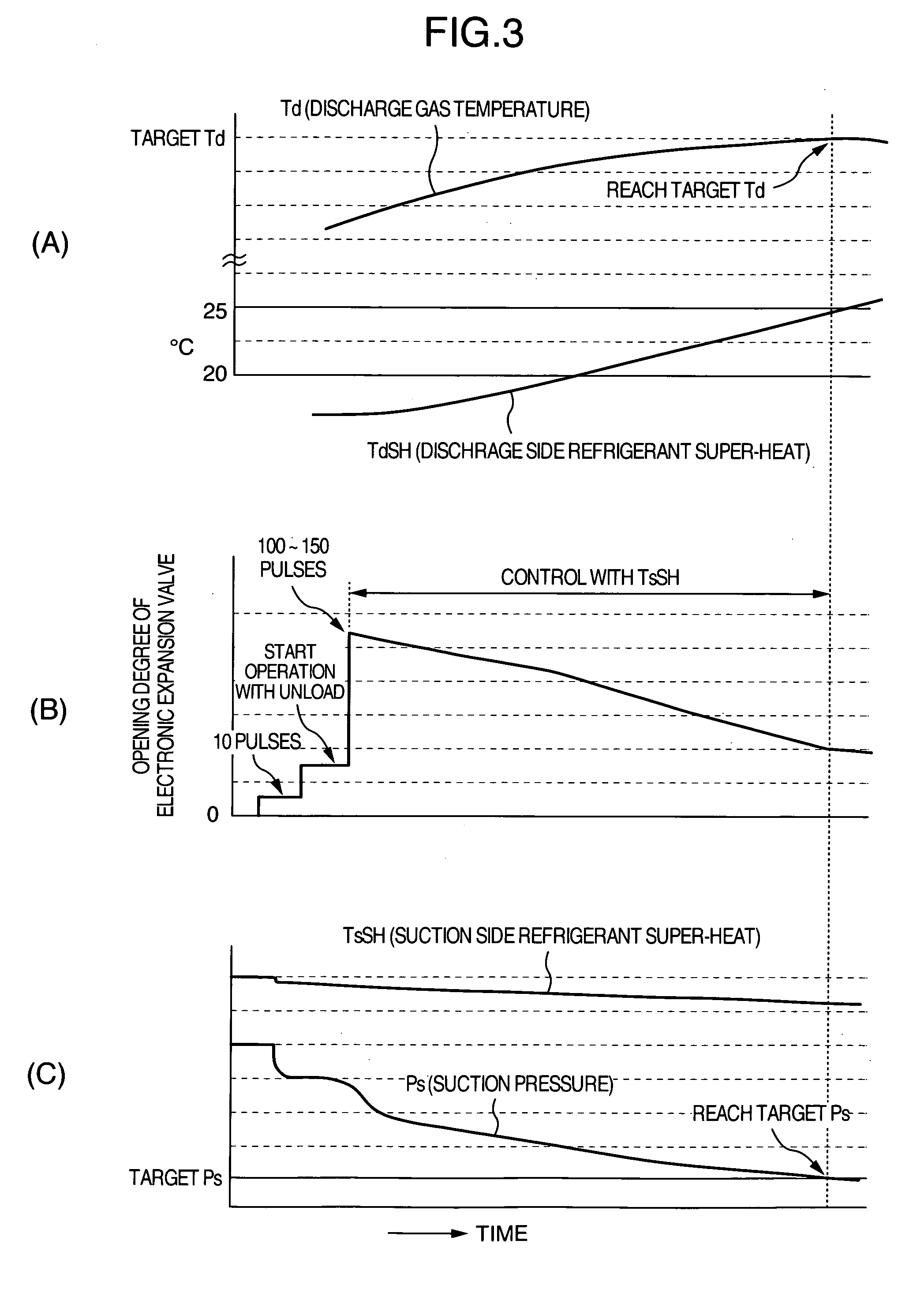Heat source apparatus and method of starting the apparatus
a technology of heating source and apparatus, which is applied in the direction of mechanical equipment, refrigeration components, lighting and heating equipment, etc., can solve the problems of slow speed, difficulty in controlling, and slow speed of electronic expansion valve opening degree, and achieve rapid decrease of suction pressure and stable operation
- Summary
- Abstract
- Description
- Claims
- Application Information
AI Technical Summary
Benefits of technology
Problems solved by technology
Method used
Image
Examples
Embodiment Construction
[0026]FIG. 1 is a view showing a schematic construction of an air-cooling type screw chiller unit which is a heat source apparatus, to which the invention is applied, and mainly showing a pipe line system diagram and component parts related to control of an electronic expansion valve.
[0027] In FIG. 1, a refrigerant system is formed by a screw compressor 1, an air side heat exchanger (condenser) 2, an electronic expansion valve 3 and a water side heat exchanger (evaporator) 4. Further, a control system is formed by a detector 5 for detecting temperature (Ts) of compressor suction gas, a detector 6 for detecting compressor suction pressure (Ps), a detector 7 for detecting temperature (Td) of compressor discharge gas, a detector 8 for detecting compressor discharge pressure (Pd), and an arithmetic processing part (opening degree control part) 9 that processes information from the detectors 5 to 8 to issue an opening degree command to the electronic expansion valve 3.
[0028] The arithm...
PUM
 Login to View More
Login to View More Abstract
Description
Claims
Application Information
 Login to View More
Login to View More - R&D
- Intellectual Property
- Life Sciences
- Materials
- Tech Scout
- Unparalleled Data Quality
- Higher Quality Content
- 60% Fewer Hallucinations
Browse by: Latest US Patents, China's latest patents, Technical Efficacy Thesaurus, Application Domain, Technology Topic, Popular Technical Reports.
© 2025 PatSnap. All rights reserved.Legal|Privacy policy|Modern Slavery Act Transparency Statement|Sitemap|About US| Contact US: help@patsnap.com



